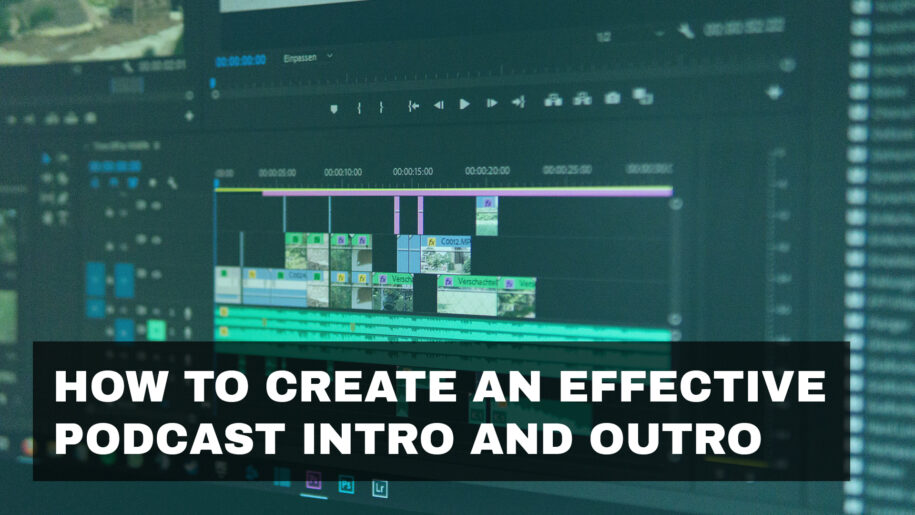The intro and outro of your podcast are crucial elements that set the tone for your episodes and leave a lasting impression on your listeners. A well-crafted intro grabs attention and establishes your podcast’s identity, while an engaging outro provides a strong conclusion and encourages further interaction. In this blog post, we’ll explore the importance of podcast intros and outros and provide practical tips to create effective ones.
Why Intros and Outros Matter
Your podcast’s intro and outro are the bookends of each episode, playing a key role in defining your brand and enhancing the listening experience. Here’s why they matter:
Benefits of a Good Intro and Outro
1. Sets the Tone
- What It Is: The intro establishes the mood and style of your podcast.
- Why It Matters: It prepares listeners for the type of content they can expect and helps create a consistent brand identity.
- Tips: Use music, sound effects, and a clear voiceover that reflect your podcast’s theme and personality.
2. Grabs Attention
- What It Is: A compelling intro captures the listener’s interest right from the start.
- Why It Matters: The first few seconds are crucial for retaining new listeners.
- Tips: Start with a hook or a thought-provoking question that draws listeners in.
3. Provides Context
- What It Is: The intro gives an overview of the episode’s content.
- Why It Matters: It helps listeners understand what to expect and why they should stay tuned.
- Tips: Briefly introduce the topic, highlight key points, or tease exciting segments.
4. Encourages Action
- What It Is: The outro includes calls to action (CTAs) that encourage listener engagement.
- Why It Matters: CTAs can drive subscriptions, reviews, social media interaction, and more.
- Tips: Ask listeners to subscribe, leave a review, follow on social media, or visit your website.
5. Creates a Professional Image
- What It Is: A polished intro and outro contribute to the overall production quality of your podcast.
- Why It Matters: High-quality production values enhance your podcast’s credibility and appeal.
- Tips: Invest in good recording equipment and editing software to ensure clear and professional sound quality.
How to Create an Effective Podcast Intro
1. Choose the Right Music
- What It Is: Selecting background music that complements your podcast’s theme.
- Why It Matters: Music sets the tone and makes your intro more engaging.
- Tips: Use royalty-free music or obtain the necessary licenses for commercial tracks. Choose music that matches your podcast’s mood—energetic, calm, professional, etc.
2. Write a Script
- What It Is: Creating a concise and engaging script for your intro.
- Why It Matters: A well-written script ensures you cover all necessary points without rambling.
- Tips: Keep it short—ideally between 15 to 30 seconds. Include your podcast’s name, host introduction, and a brief overview of the episode or podcast.
3. Record with Clarity
- What It Is: Ensuring your voiceover is clear and professional.
- Why It Matters: Clarity and quality in your recording make a strong first impression.
- Tips: Use a good microphone, record in a quiet space, and speak clearly and confidently. Consider hiring a professional voiceover artist if needed.
4. Edit and Enhance
- What It Is: Editing your intro to ensure it’s smooth and polished.
- Why It Matters: Good editing removes distractions and enhances the listening experience.
- Tips: Use editing software to balance audio levels, add effects, and ensure seamless transitions between music and voice.
How to Create an Effective Podcast Outro
1. Summarize the Episode
- What It Is: Briefly recapping the main points or highlights of the episode.
- Why It Matters: Summarizing reinforces key takeaways for your listeners.
- Tips: Keep the summary concise and focus on the most important points discussed.
2. Include a Call to Action
- What It Is: Encouraging listeners to take a specific action after the episode.
- Why It Matters: CTAs drive engagement and help grow your audience.
- Tips: Ask listeners to subscribe, leave a review, follow on social media, or visit your website for additional content.
3. Thank Your Listeners
- What It Is: Expressing gratitude to your audience for tuning in.
- Why It Matters: Thanking your listeners fosters a positive relationship and encourages loyalty.
- Tips: Personalize your thanks by mentioning any listener contributions or feedback.
4. Provide Teasers for Next Episodes
- What It Is: Giving a sneak peek of upcoming episodes or content.
- Why It Matters: Teasers build anticipation and encourage listeners to return.
- Tips: Highlight intriguing topics or upcoming guest appearances to pique interest.
Real-Life Examples and Lessons
To illustrate the effectiveness of well-crafted intros and outros, let’s look at some real-life examples:
- Example 1: “How I Built This” by NPR uses a consistent and professional intro with music and a brief introduction by the host, Guy Raz. The outro includes a summary, a call to action, and a teaser for the next episode, keeping listeners engaged and looking forward to more content.
- Example 2: “The Tim Ferriss Show” features a dynamic intro with upbeat music and a concise introduction that sets the tone for the episode. The outro includes Tim’s signature sign-off, listener thank-yous, and multiple CTAs, effectively driving listener engagement and retention.
Creating an effective podcast intro and outro is essential for setting the tone, engaging your audience, and promoting listener loyalty. By choosing the right music, writing concise scripts, recording with clarity, editing professionally, summarizing episodes, including CTAs, thanking listeners, and providing teasers, you can craft intros and outros that enhance your podcast’s quality and appeal.
Start refining your podcast’s intro and outro today to create a more professional and engaging listening experience for your audience.


